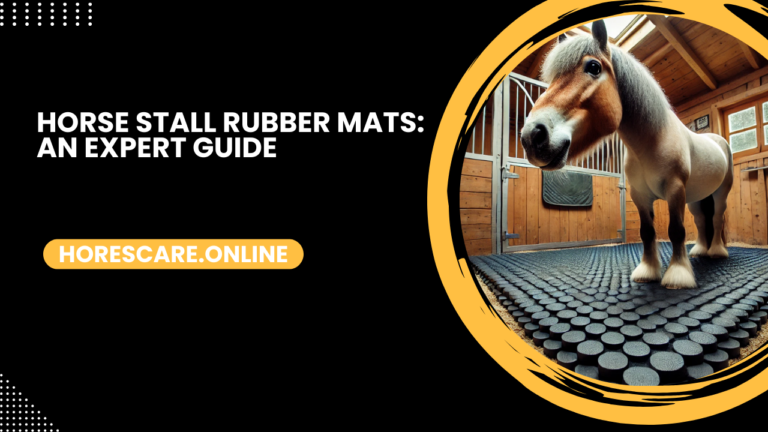Horse Blanket: Your Essential Guide for Equine Care
A horse blanket is an essential piece of equipment for horse owners, providing comfort, warmth, and protection against the elements.
Whether you’re keeping your horse warm in the winter or protecting it from the sun, a quality horse blanket ensures your horse’s well-being.
Protection from the Elements
Horse blankets serve as protective layers for horses, shielding them from harsh weather conditions. Cold, rain, and snow can cause discomfort and even harm to horses if they are not properly protected.
Horse plop, a common issue caused by cold or wet conditions, can be mitigated by ensuring your horse stays warm and dry with a properly fitted blanket.
Case Study
Winter Protection in the Northern Regions
In northern climates, where snow and subzero temperatures are common, horses are often left outdoors for extended periods.
The North American Equine Association conducted a study where horses wearing high-quality, insulated blankets experienced less discomfort and fewer health problems compared to those without blankets.
Saddle Blankets
Saddle blankets, which are slightly different from regular horse blankets, are designed specifically for use under horse saddles to protect your horse’s back from chafing.
These blankets ensure a comfortable and secure fit for both the horse and rider during rides.
Case Study
Saddle Blanket Efficiency
A UK-based equestrian center conducted research on saddle blankets’ impact on horse comfort during long rides. They found that using a high-quality saddle blanket significantly reduced saddle sores and pressure points on the horse’s back.
This not only improved the horse’s comfort but also helped increase the rider’s performance by ensuring the horse remained calm and relaxed throughout the ride.

Our Blankets
we offer a range of horse blankets designed to suit every need and environment. From insulated winter blankets to lightweight summer sheets, our products are crafted with quality materials to ensure durability and comfort.
Dark Horse Wine is known for its rich, bold flavors, much like how our horse blankets bring a touch of quality and sophistication to equine care.
We focus on functionality, allowing your horse to stay protected and comfortable no matter the weather.
Case Study
Customer Satisfaction with Our Blankets
Our blankets have been tested by equine professionals in various climates. One such customer, a rancher in Texas, noted that our lightweight summer blankets kept horses cool and protected from insects, significantly reducing irritation during hot months.
This feedback aligns with our commitment to offering blankets suited for diverse needs.
Categories of Our Horse Blankets
- Winter Blankets:
Insulated for maximum warmth during cold weather. - Summer Sheets:
Lightweight and breathable for hot climates. - Rain Sheets:
Waterproof and breathable for wet conditions. - Fly Sheets:
Designed to protect against flies and other pests. - Saddle Pads:
Cushioning for the horse’s back.
Horse Blanket Size
Choosing the correct size for your horse’s blanket is crucial for both comfort and functionality. Blankets that are too tight can cause irritation, while those that are too loose may shift and result in discomfort.
Case Study
Proper Sizing for Optimal Comfort
An equine vet conducted a study on the importance of proper sizing. It was found that a blanket with a proper fit significantly reduced skin irritation and chafing. The vet recommended measuring the horse from the center of the chest to the tail to ensure accurate sizing. Horses that wore blankets with correct measurements had a marked decrease in skin-related issues.
Choosing the Best Horse Blanket
When selecting the best horse blanket, there are several factors to consider, including the material, fit, durability, and weather conditions. Here are some tips to help you choose the perfect blanket for your horse:
- Material:
Choose materials that are waterproof, breathable, and easy to clean. Wool, polyester, and nylon are commonly used in high-quality blankets. - Fit:
Ensure the blanket is snug but not tight. It should not restrict movement and should stay in place during wear. - Weather Protection:
Make sure the blanket provides adequate protection for the conditions your horse will face. - Durability:
Select blankets made from materials that will withstand wear and tear, especially if your horse is active outdoors.
Case Study
Selecting Blankets Based on Weather
A farm in Canada shared their experience in selecting the right blanket for horses during different seasons. They found that for the harsh winters, a heavier insulated blanket worked best, while a lighter, breathable sheet was ideal for the rainy season. Their horses were able to remain comfortable and healthy throughout the year, thanks to the careful selection of blankets based on environmental factors.


